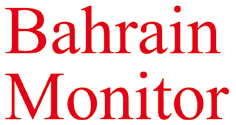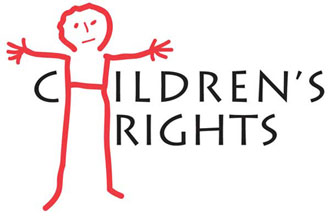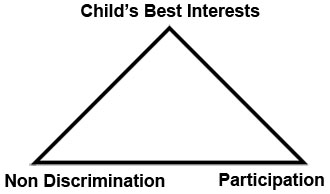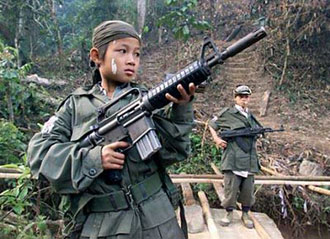
|
 |
 |
|
|
|
|
|
|
|
|
|
|
|
|
|
|
|
|
|
|
|
|
|
|
Towards a Better Understanding of the
|
 |
Providing a human rights framework derived from the principles and values of the Convention in order to accommodate different views in the legislative body.
Spreading human rights culture among ordinary people who do not work in the legal or human rights field, in order to raise awareness on CRC and provide guidelines for adopting national legislations in line with the CRC.
Contributing in the adoption of a Bahraini child law compatible with the CRC.
Convention Background
On 20 November 1989, the UN General Assembly adopted the CRC, which came into force on 2 December 1990. The Convention contains 54 Articles, which set out the rights and the fundamental freedoms of the child. The Convention takes into consideration the need of the child to be protected against harm since they are a vulnerable group in society.
CRC is comprehensive in that it incorporates the civil, political, social, economic and cultural rights all in one document. It was ratified by every member of the United Nations except Somalia and the USA. This makes it the most signed convention by UN member states.
General Principles
There are four general principles that should be taken into consideration when implementing the CRC:
Non discrimination (Article 2): All rights must be granted to each child without exception. The child must be protected against all forms of discrimination.
Best interests of the child (Article 3): In all actions concerning children, the best interests of the child shall be a primary consideration.
The right to Life, survival and development (Article 6): The right of the child to life, survival and development.
Expression of opinion (Article 12): The right of the child to express his or her opinion and to have this taken into consideration.
The rights of a child can be illustrated using a triangle:
 |
CRC Content
Definition of the child: a child means every human being below the age of eighteen years unless under the law applicable to the child, majority is attained earlier.
The Rights of the child before birth:
- Abortion is only permissible if the mother’s life is at risk and is recommended by a medical committee.
- Abortion is only permissible if the mother’s life is at risk and is recommended by a medical committee. - Mothers should have access to physical and mental care.
- Vaccinating the mother to protect the child
 |
The Rights of the child after birth:
- Right to life, survival and development.
- Right to have access to healthcare.
- Right to physical development.
- Right to mental development.
- Right to spiritual, moral and social development.
- Right to have a name, family, nationality and birth certificate.
- Right to social welfare.
- Right to an identity; it is the obligation of the State to assist the child in re-establishing identity if this has been illegally withdrawn.
- Right to be protected against abuse, oppression and exploitation.
- Right to be protected from discrimination based on ethnicity, gender, religion and political beliefs.
- Right to freedom of expression on all matters concerning him or her
- Right to have access to information, ideas and culture
- Right to have the basic needs fulfilled
Violence against children: CRC recommends that the child should be protected from all forms of violence both inside and outside the family. This includes:
- Physical punishment taking place inside or outside the family
- Female circumcision, which is the worst form of violence used against children
- Rape and sexual harassment
- Early marriage and its accompanying violence
- Some harmful traditions, such as tattooing or any other tradition that could lead to physical violence.
- Camel racing; this endangers the lives of children, and could result in death or disability.
- Abduction and separation from the family.
Child exploitation: The child has the right to be protected from all hazardous forms of labour and economic exploitation. There are many types of exploitations, but the worst form of economic exploitation is child labour, which includes:
 |
- Paying low wages or nothing at all
- Working for long hours
- Over working
- Hazardous and unhealthy work conditions
- Exploitation of children in begging
- Exploitation in the drug trade
- Exploitation of children in prostitution
- Exploitation of children in the trade of human organs.
- Exploitation of children by military institutions and armed movements.
Juvenile courts: Treatment of child accused of infringing the penal law should preserves the child’s sense of dignity. Also special procedures should be in place to deal with juveniles in police stations and courts, which includes separating children from adults.
Optional Protocols to the CRC
Two Optional Protocols were added to the CRC, namely:
Optional Protocol on the Sale of Children, Child Prostitution and Child Pornography
Optional Protocol to the Convention on the Rights of the Child on the involvement of children in armed conflict
The two above Optional Protocols were adopted by the General Assembly on 25 May 2000. The first Protocol came into force on 18 January 2002. It prohibits the sale and exploitation of children in prostitution and pornography, and defines all acts that should be criminalized. It binds states parties to protect the rights and interests of victims and rehabilitate them. It also stresses international cooperation in order to protect children from sexual exploitation.
The second Protocol entered into force on 12 February 2002. The Protocol prohibits both the involvement of children in armed conflicts and the enforced military recruitment of children under the age of 18 by governments and armed groups.